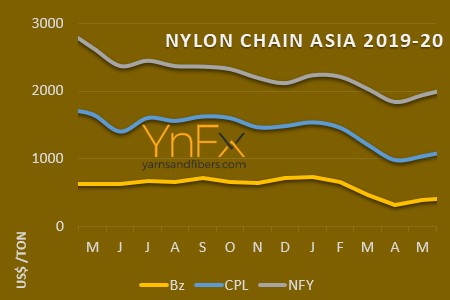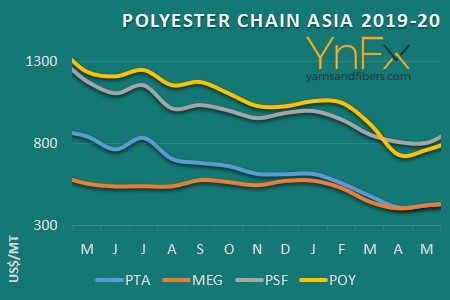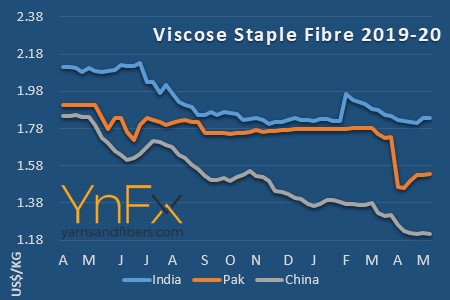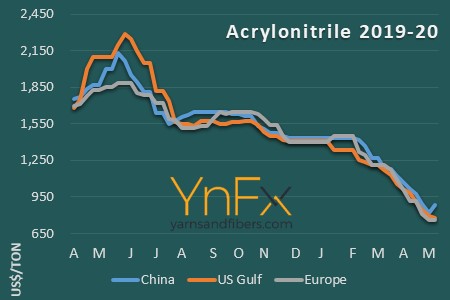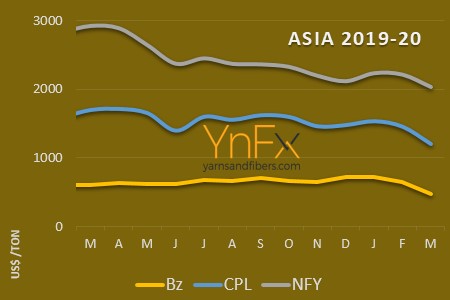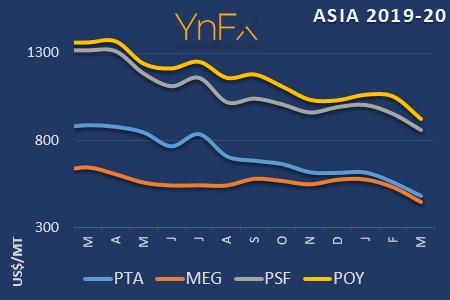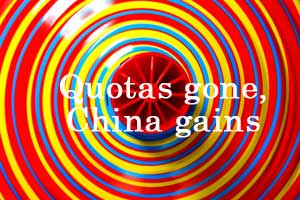
Ten years of quota-free regime in textile trade- Part 2
YarnsandFibers News Bureau 2014-07-10 05:47:24 –Quota elimination: A boon for in Textile & Clothing consumers?
CHART-Growth of Per Capita Apparel Consumption in US, EU

China emerged as the largest supplier of textiles and clothing to the US, claiming 38.5 per cent share of total US textile imports in 2012, up from 26.9 per cent in 2005, when quotas regime came to an end.
Similarly, China’s share in US clothing imports also rose from 26.4 per cent in 2005 to 39.4 per cent in 2012 (refer EXHIBIT 6-8).
CHART-Major textile suppliers to US

CHART-Major clothing suppliers to US

In 2005, a significant surge in Chinese textile and clothing exports to the United States happened at the time of expiration of an international quota system, which United States responded by imposing safeguard curbs.
"It is also possible that the United States will use its status as the world's largest textile importer to keep China from getting a big market share and thus support other economies," said Zhao Yumin, a researcher with the Chinese Commerce Ministry.
The elimination of quotas resulted into efficient allocation of global textile and clothing production. There was a shift in the global textile manufacturing chain to developing countries such as China, which overtook the EU as the world’s biggest T&C exporter. Countries such as Mexico which were earlier protected by the quota regime, suffered the brunt of the shift in production base to low-cost Asian countries.
As shown in EXHIBIT 9, Mexico’s share in clothing exports to US fell from 8 per cent in 2005, to 4.5 per cent in 2012, while, that of China, Vietnam, Bangladesh and Indonesia increased in the period. Similarly, producers in industrialized nations such as EU lost out as they could not compete with low-cost Asian producers. EU’s share in global textile exports fell to 24.3 per cent in 2012 from 33.5 per cent in 2005, while that in global clothing exports declined to 25.8 per cent from 29.2 per cent. China accounted for 33.4 per cent of global textile exports and 37.8 per cent of global clothing exports in 2012, up from 20.2 per cent and 26.9 per cent in 2005, respectively.
“When WTO quotas were over, there was a transitional period. International market took as much time as us to realise the change. They were closing down their textile industries in EU," Nahar Industrial Enterprises Limited (NIEL) vice chairman and managing director, Kamal Oswal said.
On the flipside, the end to the quota regime resulted in the loss of quota rents that were earlier received by governments of developed nations on allowing T&C imports.
Has India benefited from quota –free regime?
Being a low-cost producer with surplus labour, India has emerged as a gainer in the post quota world.The country’s share in global textile exports increased from 3.9 per cent in 2005 to 5.3 per cent in 2012, while that in global clothing exports, it climbed from 3 per cent to 3.3 per cent.
However, stiff competition from other low-cost producing countries such as China, Bangladesh and Vietnam, has cut into India’s share in major markets. While India boosted its share in textile exports to US from 9 per cent in 2005, to 12.3 per cent in 2012, in clothing exports, it fell from 4.2 per cent to 3.8 per cent. Similarly, India’s share in textile exports to EU has declined from 3.8 per cent to 3.7 per cent, and that in the region’s clothing exports have remained stagnant at 3.4 per cent in the period. Going forward, India needs to flex its competitive muscle through technology upgrades, and development of skilled manpower base.
CHART-Share in world textile exports

Still a long road ahead for developing countries
Even a decade after quota removal, developing countries face enormous challenges to penetrate deeper into advanced markets.
Some of the major challenges facing the global T&C industry include-
Ø Protectionist forces- powerful and vocal lobbies in developed markets have managed to protect their industries in collusion with government, by raising the issue of potential domestic job losses stemming from an increase in market access to developing nations.
Ø High tariff barriers- on average, tariffs imposed on textile and clothing products by developed countries are four times higher than average industrial tariffs. Further, preferential market access like FTA has distorted the tariff structure. For example, Asian countries that are not beneficiaries of preferential market access in developed countries have to pay much higher tariff on T&C products than beneficiaries.
Ø Regulatory barriers- regulatory barriers including industry standards are aimed at reducing the competitiveness of T&C exports. Stringent and complex regulations raise the cost to T&C exporters.
Ø Anti-Dumping duty-in the post-quota world, the use of anti-dumping duty by developed countries to restrict imports from large suppliers such as China, has increased significantly.
Concluded
Market Intelligence
Ask for free sample Report

experience
Customer Base
dedicated team
Countries Served Worldwide



